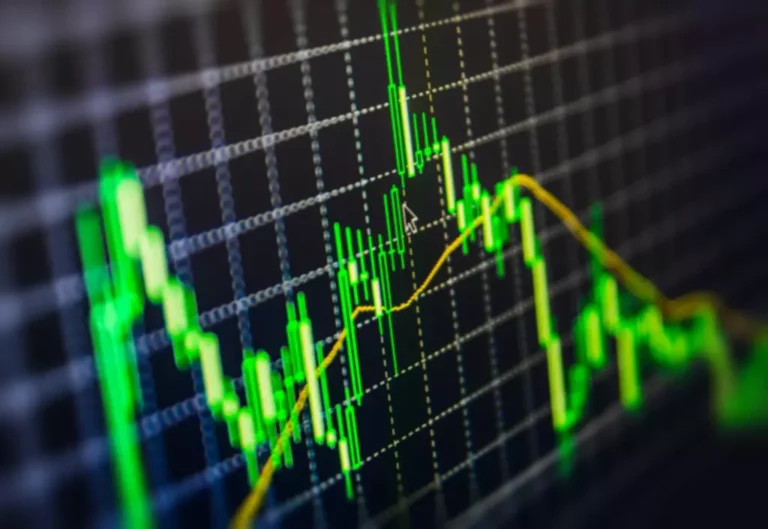Content
OTC derivatives offer Yield Farming flexibility and tailored solutions but come with heightened counterparty risk. Exchange-traded derivatives, with standardised contracts and centralised clearing, provide greater liquidity and reduced counterparty risk but offer less customisation. Ultimately, the decision to engage in OTC or exchange-traded derivatives depends on the specific objectives and risk appetite of the market participants involved.
Please complete the form and submit your request. We will be in touch shortly.

Contracts https://www.xcritical.com/ are available on a broad range of national and international ASSET references, including INTEREST RATES, FOREIGN EXCHANGE, EQUITIES, and commodities. The beauty of speculation is that you don’t have to take ownership of anything, but can still make a profit (or a loss) on various financial assets, simply by making a prediction on the market direction. You’d either buy or sell derivatives in the hope of your prediction being correct.
The pricing efficiency of exchange-traded commodities
- It provides for the right but not the obligation to transact at a pre-determined price.
- This chapter considers the relationship between the exchange traded and OTC derivatives markets.
- The stock exchange establishes all these and other rules and regulations, resulting in consistency that eliminates any difficulties for market participants and the exchange regarding contract customisation.
- However, some of the contracts, including options and futures, are traded on specialized exchanges.
- The buyer, who purchases the derivative, is referred to as the “long” or the holder.
Commonly traded index-related derivatives include the S&P 500, Nikkei, Nasdaq, and Nifty 50. These derivatives come in various forms, including stock options and forwards. Swaps are typically not traded on etd meaning an exchange but can be part of over-the-counter transactions. Stock forwards and options allow for highly leveraged bets on a stock’s price movement, predicting its future value. Worldwide stock derivatives are considered leading indicators for predicting stock movements. Exchange-traded derivative contracts are standardized, cleared, and settled through a centralized clearinghouse and accompanied by a high level of regulatory reporting.
The network that underpins global Exchange Traded Derivative processing
An exchange-traded derivative (ETD) is merely a derivative contract that derives its value from an underlying asset that is listed on a trading exchange and guaranteed against default through a clearinghouse. Due to their presence on a trading exchange, ETDs differ from over-the-counter derivatives in terms of their standardized nature, higher liquidity, and ability to be traded on the secondary market. Under US law and the laws of most other developed countries, derivatives have special legal exemptions that make them a particularly attractive legal form to extend credit. The strong creditor protections afforded to derivatives counterparties, in combination with their complexity and lack of transparency however, can cause capital markets to underprice credit risk.
If it gives the option for one party to buy an asset it is called a call option. For example, you can take a position on a futures contract listed on an exchange without buying or selling the actual contract. Rather, you’d use a CFD to predict whether the future’s price will rise or fall, based on market conditions.
Real estate derivatives were a significant factor in the 2008 economic meltdown. Despite their association with the economic meltdown, many investors still consider them a good investment, as they offer a decent trading volume and diversify portfolio risks. ETDs are agreements, such as options and futures contracts, with predefined contract terms, including contract size, expiry date, and settlement methods.
Individuals and institutions may also look for arbitrage opportunities, as when the current buying price of an asset falls below the price specified in a futures contract to sell the asset. StoneX One is a proprietary online trading platform through which investors and traders can open securities and/or futures accounts. Accounts opened through StoneX One are currently available to U.S. persons only.
Futures give the buyer the obligation to buy the underlying market, and the seller the obligation to sell at or before the contract’s expiry. The unique aspects of futures contracts are that they are standardised and traded on exchanges. All exchange-traded derivatives transactions and many OTC transactions are cleared by a central counterparty known as a Clearing House, which serves as the buyer to every seller and the seller to every buyer. ICE’s Clearing Houses, for example, deliver stability and risk management across global derivatives markets operated by ICE. With six clearing houses serving key derivatives asset classes across the U.S., U.K., Europe, Canada and Singapore, the ICE clearing platform drives operational and capital efficiency regardless of where market participants transact. A forward is like a futures in that it specifies the exchange of goods for a specified price at a specified future date.

For instance, the Options Clearing Corporation (OCC) reported clearing nearly 830 million contracts in the month of February 2021 alone, up 47.4 percent compared to February 2020. The Cboe Global Markets (Cboe) is the largest options exchange in the world, with an average daily volume in 2021 of more than 12 million contracts, another record. Generally, a contract will detail such things as the asset involved, the dollar value or amount (e.g., face amount or lot size) of the security, the settlement date and process, trading hours, price quotation, and the contract expiration date. Our market expertise, advanced platforms, global reach, culture of full transparency and commitment to our clients’ success all set us apart in the financial marketplace. With access to multiple products and with freedom from the more onerous regulatory requirements imposed on banks, we can help ensure that you can use the capital you commit to your account as efficiently as possible.
The seller is sometimes known as the writer or the “short” party in the contract. The buyer, who purchases the derivative, is referred to as the “long” or the holder. The derivative contract always defines the rights and obligations of each party, and a legal system recognizes these. The widely used definition of derivative is that they derive their performance from underlying assets. However, this definition could apply to exchange-traded funds (ETFs) or even mutual funds. A better distinction would be to say derivatives usually transform the performance of the underlying asset.
For example, you can use leverage to take a position on an index futures contract at a fraction of the cost of the actual asset. But, trading with leverage increases your risk as you stand to lose more than your margin amount. CFD trades enable you to speculate on the price of an asset by going long (buying) or going short (selling). Reduced risks – ETDs involve parties dealing through an intermediary, eliminating counterparty risk and reducing default chances due to contractual obligations with a credible exchange. High liquidity – The ETD market is highly liquid, meaning that ETDs have considerable market depth. This enables the traders to quickly match counterparties to fulfil their orders at good prices without significant loss.
As the effects of the market crisis continue to be felt, regulators are looking for greater clarity and transparency into the use of all financial products while businesses are finding they need to know more detail than ever about the derivatives they employ. Regulators are asking for more information for audit compliance purposes and generally demanding greater detail about companies’ derivatives actions, according to Wolfgang Koester, CEO of RimTec, a provider of execution and documentation software for hedging management. “Instead of simply saying they have so much of derivatives on the books, the SEC wants to know why and what is the real effect,” he says. Instead, it consists of all OTC and on-exchange financial instruments that derive their worth from an underlying asset. When trading derivatives with us, you’ll be taking a position using CFDs – which is an OTC product.
It begins by summarising the characteristics of both markets, before exploring the implications of differences in product design, trading environment, liquidity, administration and cost, and regulation and credit risk. An attempt is made to answer the question of whether the relationship is one of symbiotic reinforcement or destructive competition. The chapter concludes with some speculations of the author regarding future developments. ETDs are standardized and traded on regulated exchanges, offering more liquidity, transparency, and lower risk. OTC derivatives are privately negotiated, allowing customization but with higher counterparty risks and less market transparency. The clearing house then, is effectively the counterparty for the transaction that faces the trader and not the other party as would be the case in an OTC transaction.
